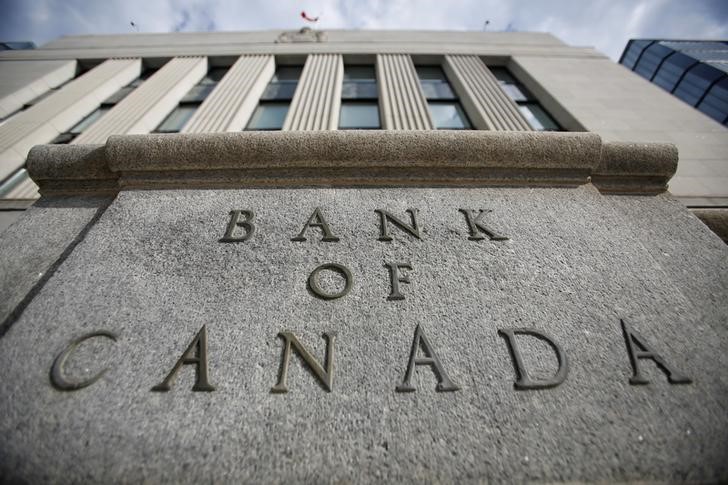By Andrea Hopkins and Leah Schnurr
OTTAWA, May 30 (Reuters) - The Bank of Canada held interest rates steady on Wednesday but dropped cautious language about future rate moves in a signal that higher borrowing costs could come as soon as its next meeting in July, sending the Canadian dollar higher.
While the central bank noted uncertainty about trade policy and stresses in emerging market economies, it dropped oft-repeated language pledging a cautious approach to setting monetary policy, suggesting gradual rate hikes will soon resume.
"Overall, developments since April further reinforce Governing Council's view that higher interest rates will be warranted to keep inflation near target," the bank said as it held rates at 1.25 percent, as expected.
Still, it said it will "take a gradual approach to policy adjustments, guided by incoming data."
In a statement analysts called hawkish, the bank dropped previous references to rate increases being warranted "over time" and removed a phrase about "some monetary policy accommodation" still being needed to keep inflation on target.
The Canadian dollar CAD=D4 rose as much as 1.1 percent against the greenback, its largest gain in more than two months. CAD/
"It's a hawkish hold," said Derek Holt at Scotiabank. "I think they're teeing up July."
The bank has raised rates three times since July 2017, most recently in January. But it has been on hold since amid uncertainty about the renegotiation of the North American Free Trade Agreement and concern about how indebted consumers will handle higher rates.
With the bank noting trade policy uncertainty is dampening global business investment, economists said policymakers were unlikely to raise rates in quick succession.
"There's no indication here that it's prepared to move at consecutive meetings. We likely would not see the next move after July until October," said Sal Guatieri, senior economist at BMO Capital Markets.
The bank said inflation will likely be a bit higher in the near term than forecast in April, largely because of increases in gasoline prices, though it noted it will look through the transitory impact of gas price fluctuations.
The bank said data since April support its outlook for economic growth around 2 percent in the first half of 2018, with exports of goods more robust than forecast, while housing remained soft into the second quarter.
The bank also said there is some upside to the outlook for the U.S. economy, while the price of oil, a key Canadian export, has been higher than assumed in April.
